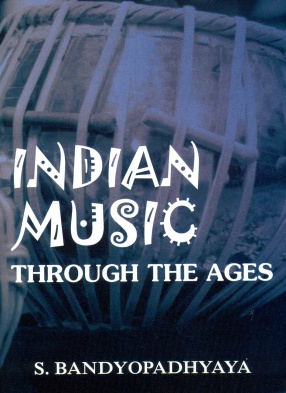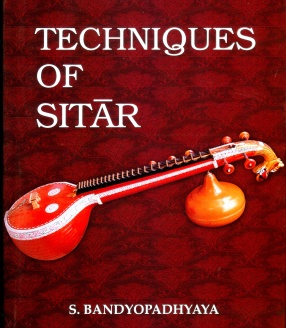
B.R. Rhythms

39 books













Contents: 1. Practice Overview. 2. Raga Yaman. 3. Originality, The Key to Success. 4. Raga Ahir Bhairav. 5. The Heart of Listening. 6. Raga Hansadhwani. 7. Guru and Disciple. 8. Raga Bageshree. 9. Instruments are Instrumental. 10. Raga Bihagra. 11. Raga Bairagi. 12. Raga Jog. 13. Raga Bhoopali. 14. Raga Shankara. 15. Raga Malkauns. 16. Raga Desh. Appendices.

The articles on this book represents a compilation of a wide range of articles on music by various authorities. The purpose of this volume is to bring under one cover some of the materials in an appropriate sequence so as to portray a cogent picture of the different facets of Indian Music and Dance as well as Western music. As such the compilation should provide the general reader as well as lover of music valuable and interesting information on the subject.

Music in India was undivided and one singular tradition termed Indian music was existed till the invasion of the Mughals and Persians into the Northern part of India. The music and its growth that we see today hence became unchanged and un-impacted. The authors of this volume have edited and presented in this volume an extensive collections essays focusing on composers like Jayadeva, Puradandara Dasa, Haridasa composers from Karnataka, King Shahaji, Margadarsi ...


Kuchipudi is a well known classical form of India. It has centuries of history. Siddhendra Yogi is considered to be the creator of Kalapa tradition, a rare format in kuchipudi style of presentation. The kalapa created by Siddhendra Bhamakalapam revolves round the prime character Satyabhama the most beautiful, lovable and egoistic queen of Lord Krishna. We can find the total representation of Bharatasastra in this Kalapa, Kavyalakshanas are also attributed to it. ...

This volume brings to the fore a synoptic and thematic understanding of the development of South Indian music commencing from 13th cent thru 18th century, the latter period being categorized as the Golden Period of South Indian music. The complete growth of Indian during this period is considered as the Golden Era of South Indian Music. The contributions of Jayadeva, Puradandara Das, the father of Carnatic music and his forerunners known as Haridasa of Karnataka, ...

From the evidence contained in the creative literature, texts and manuals, sculptural reliefs, architectural monuments, inscriptional and epigraphical records etc., it is obvious that music flourished at all levels of the society and also that each region was culturally related to other regions far and near. And yet not withstanding these inter-relationships and mutual borrowing, some regions because of political events, some because of migration from other parts ...

The dearth of written material of quality and authenticity on contemporary music performance, musicians and related issues to be considered seriously in the context of preservation and propagation of Indian classical music.
The reading material available today on Indian music is mainly by theoreticians and not practicing musicians. In general, one observes lack of objectivity and scientific approach in the work by Indians and the absence of cultural perspective ...

This is a study of the history and development of Kashmiri classical music, sufiana mausiqi, from its origin at the time of the fifteenth century to the present. It begins with a discussion on advent of Islam and Sufism in the Kashmir region. It examines some fundamental concepts of sufiana mausiqi such as its concept of maqam, tala and notation and the instruments that are used in the musical recitals. It highlights the existing gharanas in this art form, giving ...

This book, running into two volumes, seeks to examine the different aspects of Karnataka music and dance. Analyzing the words and syllabic meanings of well-known Kritis, it highlights their raga movement and significance of laya variations. Some non-kriti forms like Meera’s bhajans, Bharati’s songs and Tiruppugazh have also been included whenever required.
Volume one has analysis of songs on Ganesh, Guru, Siva, Devi and Subramanya. Volume two is on ...


Dance studies across genres require muliple approaches for an understanding of the sociological, phenomenological, political, cultural, philosophical and aesthetical practices that influences the dance's kinesthetic and existential character. In the context of Bharatanatyam, the moment of explaining shifting ideologies and its impact on the form, content and process, is a moment of convergence, of past and present, dancer and society. This convergence has been so ...

This book traces the evolution and gradual development of Indian music from the very beginning of human civilization to the modern scientific age. Begining with the music of the Vedic and Puranic c ages, it goes on to explore the romantic idea of " raag-raagin" and its classifications alongwith the brief history of music of the A.D. 16th , 17th and 18th centuries with pertinent references to the Persian and Arabic influence on Indian Music. It covers ...

Sitar technique has been identified with melodious sound of infinite beauty and grace. In music there is rhythm and harmony. It has the capacity of fulfilling physical and meta-physical emotions and sacred vibration of heart of all people for eternal bliss.
This sound has been evolved from the murmur of the flowing rivulets, the whistly of the blowing wind, the hiss of the flames, the rumble of the earth and thunder of the heavens as the fundamental of all music ...

This book analyses the Krti- a musical form liked and encouraged by the music loving public in concerts. The sub-title of the book " Krti Sanskrti" - is a reminder that Krti is a flowering of Indian Sanskrti (culture) combining the best in classical ' music' and 'language'. Krti bring together Sanskrit and all the four major South Indian languages. Tamizh tradition has contributed powerful inputs in rhythm, mathematical patterns and the rhyme. Scenes ...

This book analyses the krti- a musical form liked and encouraged by the music loving public in concerts. The sub-title of the book “Krti Sanskrti” – is a reminder Sanskrti (culture) combining the best in classical ‘music’ and ‘language’. Krti brings together Sanskrit and all the four major South Indian languages. Tamizh tradition has contributed powerful inputs in rhythm, mathematical patterns and rhyme. Scenes from ...

Tribal Songs, Ballads and Oral Epics of Bastar, is a study that is perhaps the first of its kind. Folk songs/poetry in Bastar has hitherto been viewed from th perspective fo anthropology and/ or history. No one yet is known to have examined the socio-religious songs/poetry of the tribes in Bastar from the perspective of literary criticism. This is a new turf for studies on tribal societies in India, and to that extent this book breaks new ground and sets new ...

Time monograph offers, for the first time, a collection of path-breaking writings of Kapila Vatsyayan, published as research papers in various journals during the last fifty years. Published as seventeen independent but interwoven chapters, the present work relates to the methodological problems and future course of dance scholarship, the intricacies of sculptural representations of dance forms in ancient Indian art, and goddesses and women in Indian Myth and ...


Among the many styles of dance that we have on the subcontinent. It is perhaps Bharatanatyam which represents the dancer as Goddess; her costumes, her jewellery, her stance, the clear and precise geometries of the dance, its meaning, its techniques that reveal the visionary four dimensional geometries of inner space in three dimensional sections.While the dance is seen on stage in front of an audience, yet it takes form in an invisible, mystical world from which ...

The history of Odissi dance over the last sixty years is the story of the life and work of Guru Mayadhar Raut. Known as one of the four pillars of Oddisi, his style of Odissi (Mayadhar Raut Paddhati) is Bhava Pradhan.The book captures the dynamic years of the 30s, 40s to the 70s in the world of Odissi. It describes, in detail, the struggle and the hardships undergone in redefining and codifying Odissi as one of the prominent classical dance forms of India. It ...

This study is based upon field research conducted in Hanol, a Jaunsari village in the Western Himalayan region of India. The daily puja ceremonies in Hanol are central to the social spiritual life the community; ritual drumming is a central component of this ceremony. During the ceremony, the Bajgis, hereditary musicians, perform a series, of talas (rhythmic cycles) that bring the spirit of the deity into oracles known as bakis or malis. The temporally and ...


